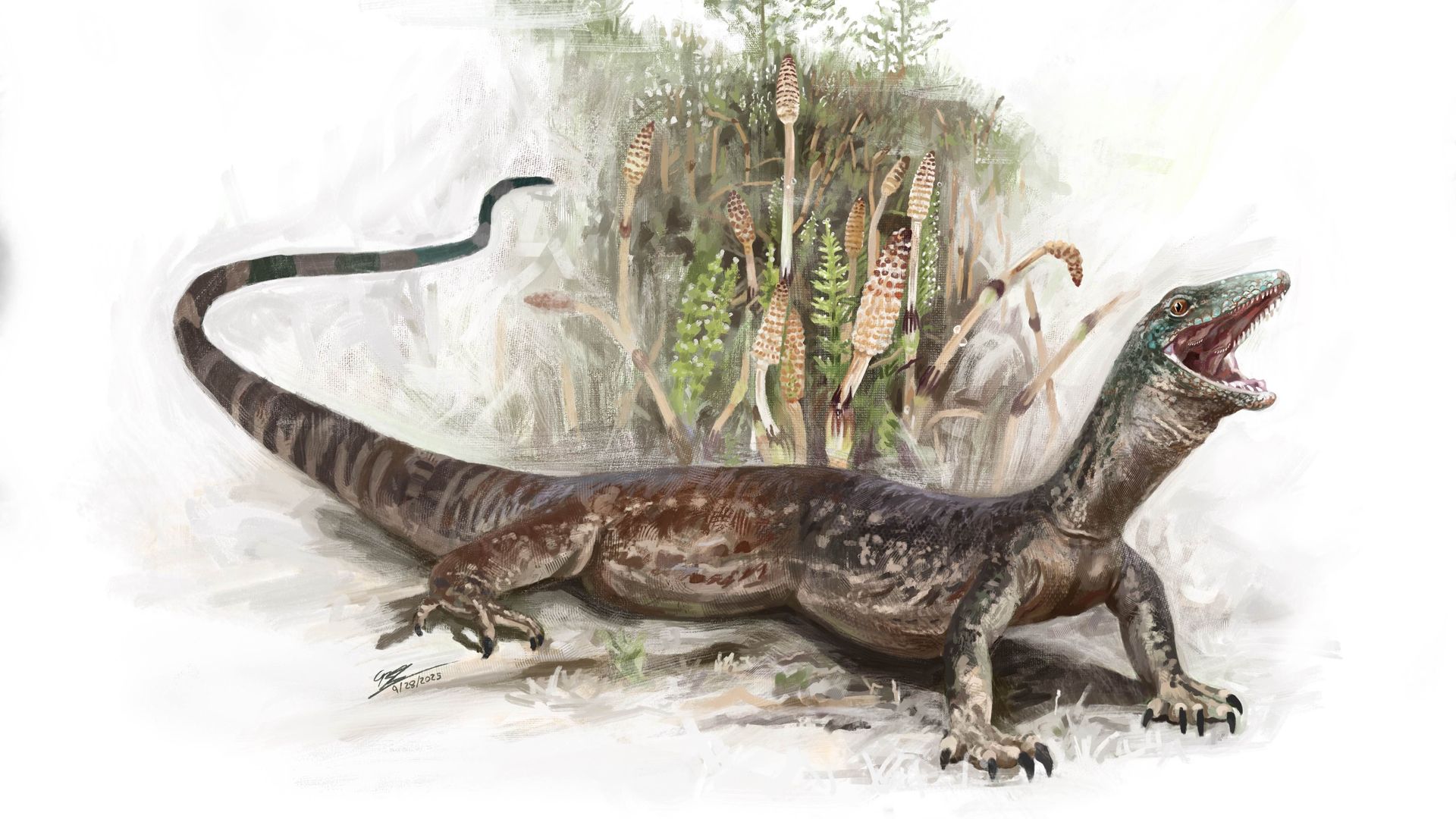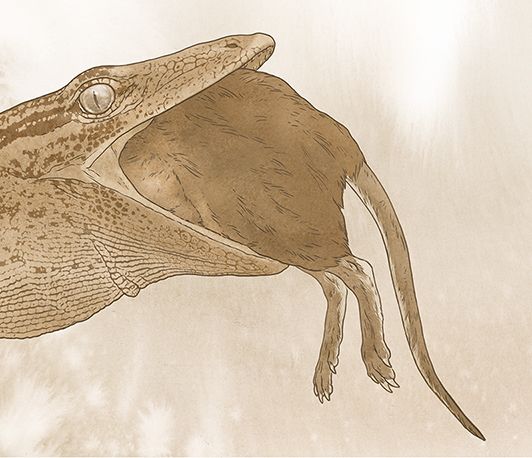Follow us on Google News (click on ☆)
The animal, named Breugnathair elgolensis – meaning "false snake of Elgol" in reference to its puzzling anatomy and the Scottish village where it was discovered – measured approximately 40 centimeters long (about 16 inches).

The fossil of Breugnathair elgolensis, discovered near the village of Elgol in Scotland, displays a mixture of lizard-like and snake-like traits.
Credit: National Museums Scotland © Brennan Stokkermans
It was among the largest lizards in its ecosystem 167 million years ago. Its hooked teeth, similar to those of modern pythons, and its elongated jaw likely enabled it to hunt small prey such as primitive mammals or even young dinosaurs. However, its short body with well-developed limbs more closely resembles that of a lizard, creating a unique hybrid morphology.
Researchers have classified this species within the Parviraptoridae, a subgroup of Squamates – the large group that includes lizards and snakes – previously known only from fossil fragments. The detailed study of the specimen, involving techniques such as computed tomography (three-dimensional medical imaging) and X-rays, confirmed that gecko-like (resembling those of geckos) and snake-like characteristics indeed coexisted in the same individual. This discovery ends debates about attributing these traits to separate animals.
The Jurassic fossil deposits on the Isle of Skye are of global importance for understanding the emergence of modern vertebrate groups. Susan Evans, professor of vertebrate morphology and paleontology at University College London, emphasizes that lizards were just beginning their diversification at that time. The mosaic of primitive and specialized characteristics observed in Breugnathair elgolensis illustrates the complexity and unpredictability of evolutionary pathways within Squamates.

The teeth and tooth-bearing bones of Breugnathair elgolensis show striking similarities to those of a modern python.
Credit: Mick Ellison/©AMNH
Paleontologists are still questioning the exact place of this species in the evolutionary tree: is it a direct ancestor of snakes, or a stem lineage that contributed to the emergence of all lizards and snakes? Roger Benson, curator at the American Museum of Natural History, expresses the team's excitement at the prospect of solving this mystery, while acknowledging that the fossil, although valuable, doesn't provide all the answers. Research continues to determine whether snakes evolved from similar forms or independently developed comparable oral adaptations.